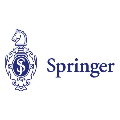In order to meet mobile cellular users' ever-increasing network usage, today's 4G and 5G networks are designed mainly with the goal of maximizing spectral efficiency. While they have made progress in this regard, controlling the carbon footprint and operational costs of such networks remains a long-standing problem among network designers. This Challenge paper takes a long view on this problem, envisioning a NextG scenario where the network leverages quantum annealing computation for cellular baseband processing. We gather and synthesize insights on power consumption, computational throughput and latency, spectral efficiency, and operational cost, and deployment timelines surrounding quantum technology. Armed with these data, we analyze and project the quantitative performance targets future quantum hardware must meet in order to provide a computational and power advantage over silicon hardware, while matching its whole-network spectral efficiency. Our quantitative analysis predicts that with quantum hardware operating at a 140 $\mu$s problem latency and 4.3M qubits, quantum computation will achieve a spectral efficiency equal to silicon while reducing power consumption by 40.8 kW (45% lower) in a representative 5G base station scenario with 400 MHz bandwidth and 64 antennas, and an 8 kW power reduction (16% lower) using 2.2M qubits in a 200 MHz-bandwidth 5G scenario.
翻译:为了满足移动移动电话用户不断增加的网络使用量,今天的4G和5G网络的设计主要着眼于最大限度地提高光谱效率,尽管它们在这方面取得了进展,但控制这些网络的碳足迹和运行成本仍然是网络设计者长期存在的一个问题。本挑战文件对这一问题持长远观点,设想了“下一个G”设想方案,即网络为蜂基带处理工作利用量子反射计算计算法进行蜂窝宽带宽度和4.3M方位。我们收集并综合了关于电力消耗、计算吞吐量和延缓度、光谱效率和运营成本以及量子技术部署时间表的见解。我们用这些数据分析和预测定量性能目标未来量子硬件必须达到,以便提供对硅硬件的计算和动力优势,同时使其整个网络光谱效率相匹配。我们的数量分析预测,如果量子硬件以140 美元的问题悬浮度和4.3M方位值计算,那么量子计算将达到相当于硅的光谱效率,同时在具有代表性的5GMHS-22基站(16个主机段)使用低六千兆瓦的四千兆瓦的四千兆位和低六千兆瓦的五千兆赫天平段基准假设中将电力消耗减少40.8。




